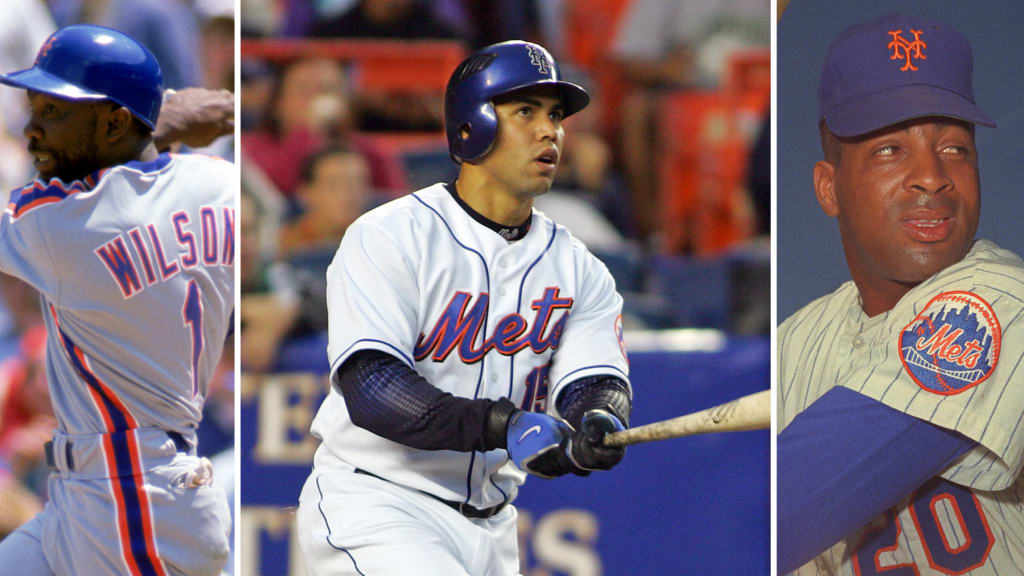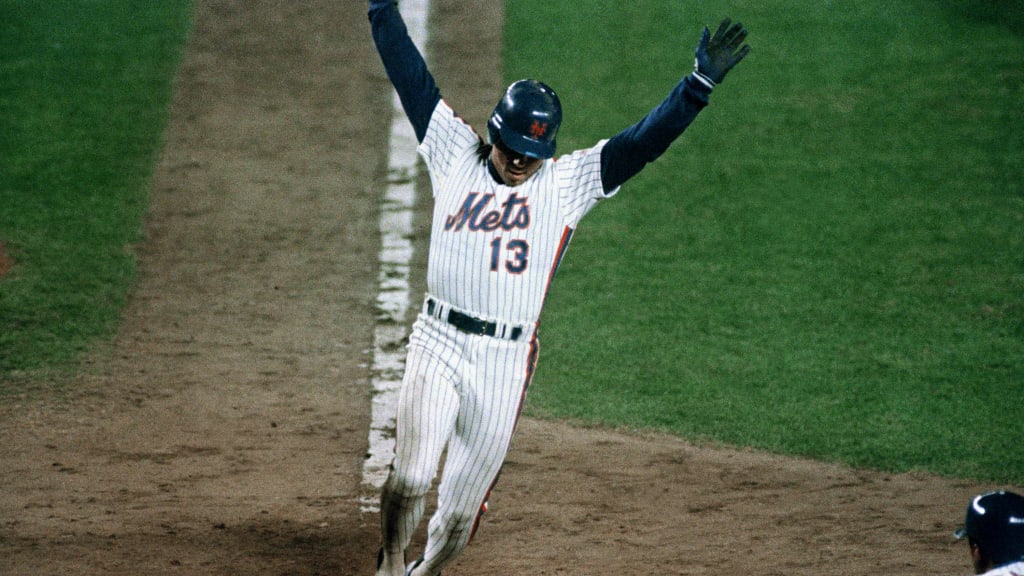
No one loves a good debate quite like baseball fans, and with that in mind, we asked each of our beat reporters to rank the top five players by position in the history of their franchise, based on their career while playing for that club. These rankings are for fun and debate purposes only … if you don’t agree with the order, participate in the Twitter poll to vote for your favorite at this position.
Here is Anthony DiComo’s ranking of the Top 5 center fielders in Mets history. Next week: Right fielders.
1. Carlos Beltrán, 2005-11
Key fact: Compiled more WAR, home runs, doubles and RBIs than any other Mets center fielder
The injustice of Beltrán’s Mets career is that it likely will always be remembered for two things: the called strike three he took against Adam Wainwright to end the 2006 National League Championship Series, and the two months he spent as manager without ever managing a game. Those events are inextricably part of his legacy.
And yet to focus solely on them would be to ignore a tenure that saw Beltrán hit .280/.369/.500 with 149 home runs over seven seasons, producing 31.1 Wins Above Replacement over the life of a contract that cost the Mets $119 million. At the time, it was the largest commitment in franchise history, and it turned out to provide surplus value. Beltrán made five All-Star teams and won three Gold Glove Awards and two Silver Slugger Awards in New York, and he even left a valuable parting gift: Giants prospect Zack Wheeler, whom the Mets received in a trade for Beltrán in 2011.
Beltrán's success in New York was unique; he appeared in more games and produced better numbers for the Mets than with any of his six other teams, including three home runs in the seven-game 2006 NLCS.
“Carlos Beltrán did not lose us that series,” former teammate David Wright once said. “Carlos Beltrán, if anything, kept us in that series longer than maybe we should have been.”
2. Mookie Wilson, 1980-89
Key fact: Second in Mets history with 281 stolen bases
Like Beltrán, Wilson is best remembered for a single play to end a postseason game. Unlike Beltrán, Wilson’s play was positive: on the 10th pitch of a battle with pitcher Bob Stanley, he grounded a ball through the legs of Bill Buckner that allowed Ray Knight to score the winning run in 1986 World Series Game 6.
Also like Beltrán, Wilson enjoyed a career defined by more than one play. A solid defensive center fielder over 10 years in Flushing, Wilson was a remarkably consistent hitter who batted between .276 and .296 every year from 1982-88. He averaged 34 steals per season during those years, setting a Mets record of 281 that stood for two decades until José Reyes broke it in 2008. Wilson’s 58 stolen bases in '82 was also the Mets’ single-season high until Roger Cedeño swiped 66 in '99.
In other words, Wilson gave the Mets much more than a little roller up the first-base line.
“I think all athletes want to be recognized for what they accomplished and contributed to an organization and to the game itself,” Wilson told Newsday in 2016. “It seemed that for a moment there, all of that was forgotten or overshadowed by the one moment. … So that felt bothersome. But I’ve come to grips with it, and it’s part of who I am. It’s part of baseball history and it is part of Mets history. Who am I to deny the fans the opportunity to enjoy talking about it and reliving those days?”
3. Tommie Agee, 1968-72
Key fact: Won a Gold Glove Award in center field in 1970
There’s a case to rank Agee as high as first or as low as fourth on this list. Third seems about right. A powerful slugger who hit 26 home runs in 1969, Agee was better known as a graceful center fielder who made two tremendous catches -- one running, one diving -- to save as many as five potential runs in World Series Game 3. Agee also homered that day, engineering one of the greatest individual performances in a World Series Game in history.
The 1966 American League Rookie of the Year Award winner with the White Sox, Agee hit .262 with 82 homers over six years with the Mets.
4. Lenny Dykstra, 1985-89
Key fact: Hit .300 with three home runs, six RBIs and an .892 OPS in the 1986 postseason
Perhaps better-known as a Phillie, “Nails” was not only originally a Met, but an integral part of the team’s 1986 championship. His walk-off home run in NLCS Game 3 gave the Mets a crucial series edge, and his RBI single in the 16th inning of Game 6 provided the margin they would need to hang on for the pennant. The Mets’ regular leadoff hitter against right-handed pitchers, Dykstra also went 4-for-5 with a homer in World Series Game 3 and homered again the following evening. The Mets won both nights.
Overall, Dykstra hit .278/.350/.413 with 30 homers and 116 steals in five seasons, before the Mets sent him and Roger McDowell to the Phillies in an ill-fated trade for Juan Samuel.
5. Lee Mazzilli, 1976-81, '86-89
Key fact: Fifth in WAR all-time among Mets first-round Draft picks
Brooklyn-born and bred, Mazzilli roamed center field regularly for the Mets for the first half-dozen years of his career, before returning in more of a corner outfield/first base role -- and enjoying something of a career renaissance -- in 1986. Mazzilli’s first stint in Flushing may have been more statistically successful, but the second included two of his three postseason appearances and his only World Series ring. Mazzilli made one All-Star team, in 1979, batting .303 that year with 15 homers, 34 steals and an .844 OPS.

Honorable mentions
• Juan Lagares was supposed to be the Mets’ long-term successor to Beltrán in center, and his early-career defensive work was breathtaking enough to earn him a well-deserved Gold Glove Award in 2014. But Lagares battled injuries for most of his career, falling well short of his potential.
• The best athlete the Mets have had this century? It could be Ángel Pagán, who manned center regularly from 2009-11. He won a ring with the Giants the following season.
• And the Mets’ best leadoff hitter? How about Lance Johnson, who stole 50 bases and reached base at a .362 clip in 1996. Alas, Johnson played only one additional half-season in Flushing.
• One final shoutout is in order: Willie Mays, who makes this list by virtue of being Willie Mays.


